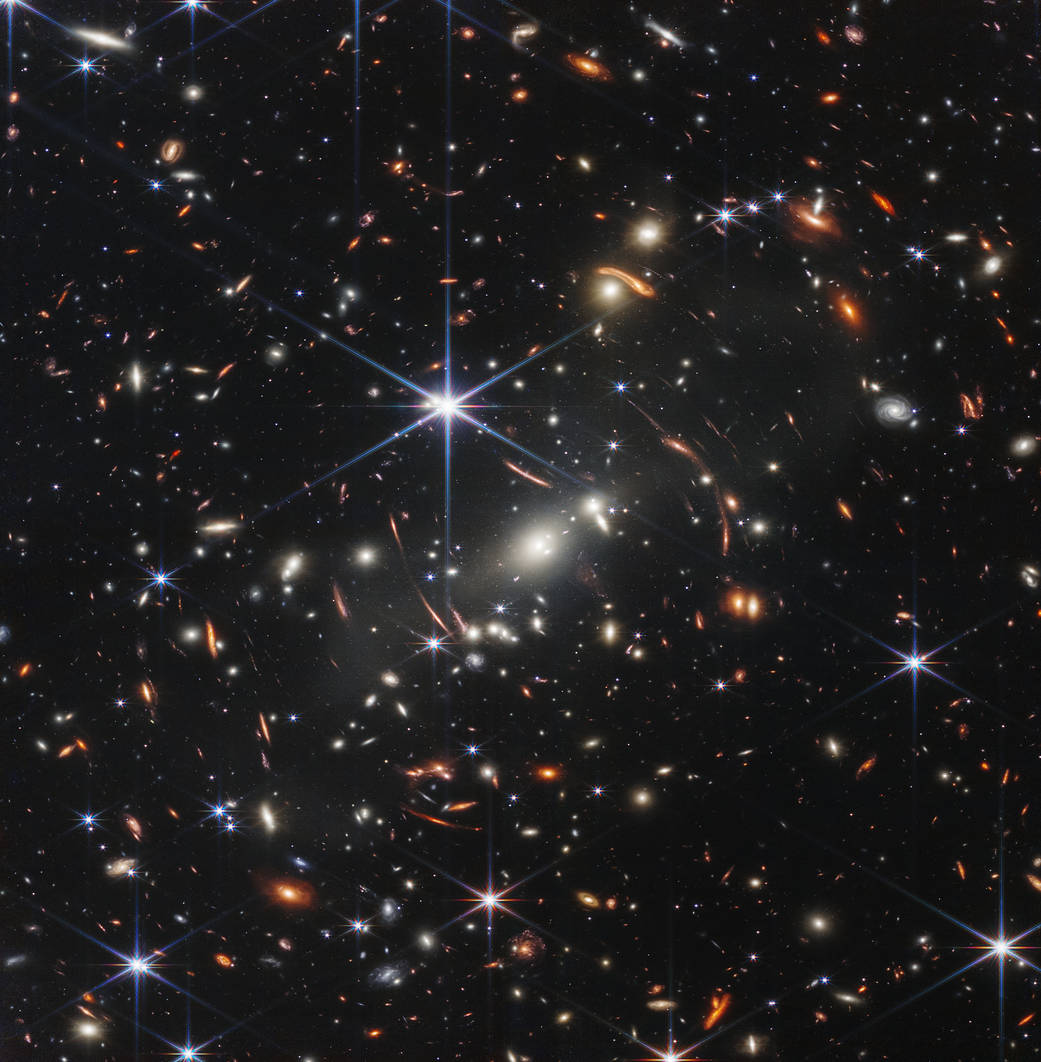Space & Astronomy
July 12, 2022 · 30 comments
30 comments

Unveiled by Biden at a special White House event yesterday, the image - known as Webb's First Deep Field - shows a sharp, detailed view of the distant galaxy cluster SMACS 0723.
The patch of sky covered by this view is tiny - equivalent to a grain of sand held at arm's length.
Captured using Webb's Near-Infrared Camera (NIRCam), the image shows hundreds of distant galaxies as they appeared 4.6 billion years ago and is a composite made up of multiple shots of different wavelengths that were captured over a period of 12.5 hours.
More images from the telescope are expected to be released in the near future.
Source: NASA.gov | Comments (30)
James Webb Space Telescope reveals its first images
By T.K. RandallJuly 12, 2022 ·
 30 comments
30 commentsPresident Joe Biden has unveiled the next-generation space telescope's first deep field images of a distant galaxy cluster.
The most powerful and complex telescope ever launched into space, the James Webb Space Telescope has finally revealed its first view of the cosmos and it is as impressive as we had hoped.
Unveiled by Biden at a special White House event yesterday, the image - known as Webb's First Deep Field - shows a sharp, detailed view of the distant galaxy cluster SMACS 0723.
Captured using Webb's Near-Infrared Camera (NIRCam), the image shows hundreds of distant galaxies as they appeared 4.6 billion years ago and is a composite made up of multiple shots of different wavelengths that were captured over a period of 12.5 hours.
More images from the telescope are expected to be released in the near future.
Source: NASA.gov | Comments (30)

The Unexplained Mysteries
Book of Weird News
AVAILABLE NOW
Take a walk on the weird side with this compilation of some of the weirdest stories ever to grace the pages of a newspaper.
Click here to learn more

Support us on Patreon
BONUS CONTENTFor less than the cost of a cup of coffee, you can gain access to a wide range of exclusive perks including our popular 'Lost Ghost Stories' series.
Click here to learn more
Other World News
Ancient Mysteries and Alternative History
United States and the Americas
Metaphysics and Psychic Phenomena
Total Posts: 7,767,984 Topics: 325,012 Members: 203,758
Not a member yet ? Click here to join - registration is free and only takes a moment!
Not a member yet ? Click here to join - registration is free and only takes a moment!

































Please Login or Register to post a comment.